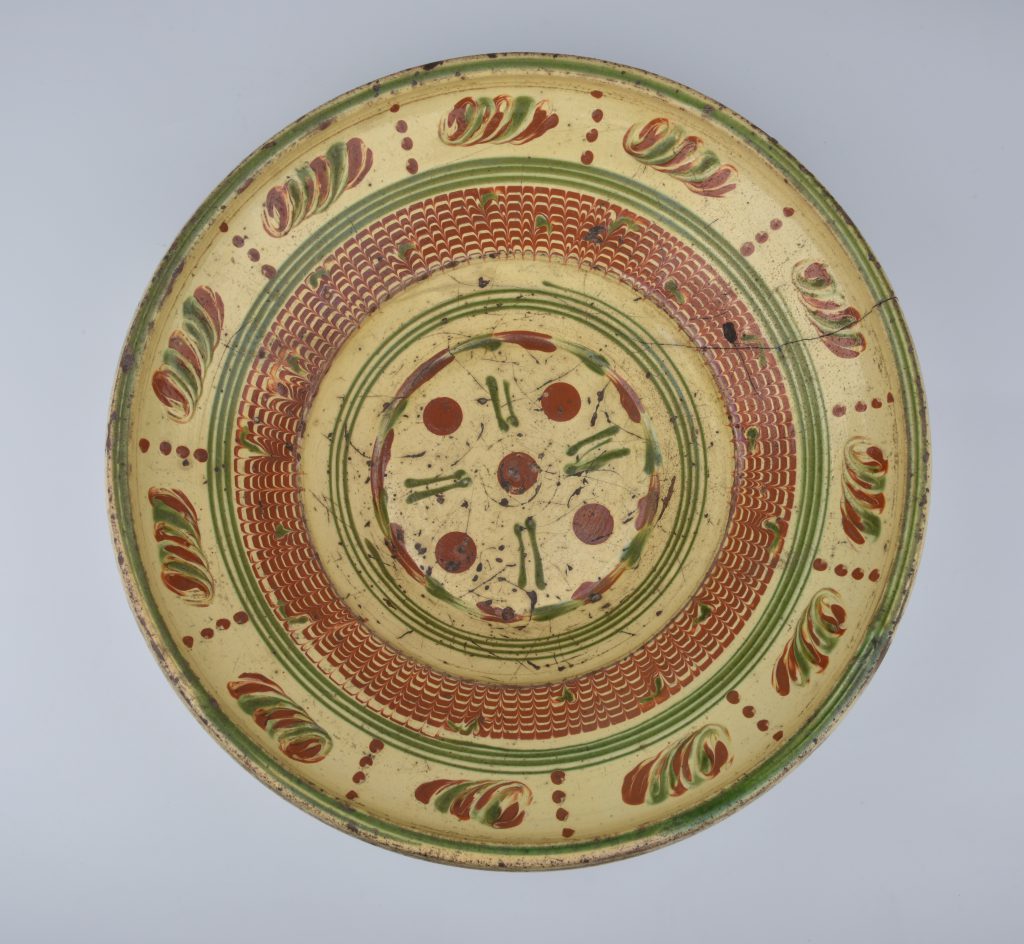
Vertical slip combing on the wall, slip trailing on the well and lip.
Combed decoration in CERAMICA CH
Slip combing or feathering was done using relatively thin slip. The technique was mostly used to decorate open vessels (bowls or plates). The vessel was placed on the potter’s wheel or turntable and the slip applied to the revolving object (rows of dots in two different colours, spirals or circles). A brush or several thin brushes, a feather or a thin iron wire or pin was then used to draw out the shapes to create distinctively distorted, linear horizontal or heart-shaped motifs. The brush or comb could also be drawn downwards at right angles across slip-trailed lines, which resulted in characteristic feathered patterns. In Switzerland slip combing was first used in the late 17th century and remained popular until the 19th century. The earliest slip-combed ware in England (Donyatt, Somerset) is believed to date from as early as the 14th century.
Translation Sandy Haemmerle
German: Borstenzugdekor – Federzugdekor
French: Décor peigné

